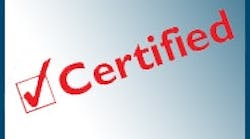By Kenan Senguen, Consulting Engineer International, M&M Software (FDT Group Member)
Before the arrival of FDT Technology, each individual device or device family introduced its own software application for configuration and parameterization. With an increase in the size of a facility and the number of different devices deployed in the facility, the number of new software installations grew as well. As a result, costs and resources associated with familiarization, training and re-training of engineers or maintenance personnel rose disproportionately higher compared to the increase in facility size and device count, causing operational inefficiencies and increased failure rates during commissioning and/or maintenance.
In order to minimize the number of different software installations per facility, FDT Technology was initiated in 1998 as a new and open software interface model that provided a similar architecture to that of device drivers used by printers or other pieces of common PC hardware. As previously discussed in "The Components of FDT Technology: A Basic Introduction to DTMs and the FDT Frame," the technology is composed of two distinct software components: A Frame Application, which corresponds to the environment for engineering, operations or management activities and a Device Type Manager or DTM, which represents the device itself. These components create the communication model between automation systems and field devices allowing end users open access to device intelligence.
In this model, software components from different manufacturers must interact flawlessly with one another – the engineering application from one vendor must work with DTMs from a variety of device vendors. To promote a best-in-class solution, the FDT Group, with membership of leading automation end users and suppliers, has implemented a rigorous DTM Certification process. The certification testing scope ranges from installation of a given DTM to its removal from the system, while covering hundreds of operational test cases in between. With an eye on certification throughout the DTM development process, the development effort and code structures can be streamlined for more efficient operations and the ability to add product features with minimum effort.
After a DTM passes the certification test at the independent test facility, it receives a certificate documenting approval and may carry the "FDT certification" logo. Certified DTMs are published on the FDT Group website in the product catalog (view DTM- Certified Product Catalog) allowing users the opportunity to select best-in-class smart instrumentation for their environment, providing a solid foundation for their facility.
Users of FDT Technology experience the highest level of interoperability with the combined advantages of international standardization, such as IEC 62453 and the comprehensive certification process. While international standardization enables consistency across a broad range of automation assets, resulting in reduced maintenance costs and greater operational efficiency, the expansive testing process that is part of the certification process enforces specification conformance and minimizes engineering efforts during design, implementation and commissioning of automation projects.
For more information on testing and certification procedures, please visit: http://www.fdtgroup.org/en/the-certification-process.html. For questions, please email: [email protected].




